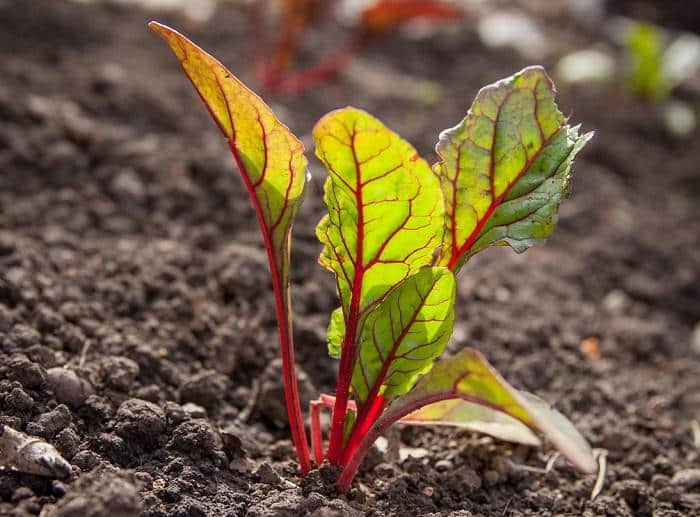Gardening involves a lot of hard work, from turning the compost pile to deep tilling. If you love gardening but hate all of the chores, then we’ve got your answer.
Lasagna gardening is exactly what the name implies: layering the garden beds with different materials to form the growing medium. It is not only an easy way to grow veggies, but an excellent recycling project. You can dump all sorts of organic material, as you do it in alternating layers.
The beds are built on top of the soil without disturbing the ground in any way. The area is watered and covered in newspaper, on which hay, compost, grass clippings, peat, dry leaves, rotted manure and crushed leaves all go in repeated layers. The beds are kept moist to create the ideal conditions for microbial decomposition. Earthworms do their part, too. Seeds and seedlings go directly into the beds in close plantings.
Getting Started
Choose the site
To start your lasagna garden beds, you should first locate the site. Traditional gardeners always look for ground that previously has been under cultivation. That’s because you get at least a foot or two of loose soil in such areas, which makes deep tilling easier.
Seamazing: The Low-Cost Way To Re-mineralize Your Soil
However, no-till gardening is not restricted by such limitations. You can choose any piece of land, whether it is hard as rock or overrun by weeds. It doesn’t matter whether you have clay or sandy soil, or the property is in a rocky area. The only requirement is that the site gets good sunlight.
Direct sunlight is a prerequisite for a successful vegetable garden, be it lasagna garden or not. A few leafy greens may tolerate shade, but most vegetables – such as tomatoes, beans, potatoes, onions and carrots — are sun-loving.
When to start
It is possible to start planting your garden as soon as you make the beds with layers of materials, but then you need to add a few inches of soil or matured compost for planting. But it is best if you can give nature a few months’ time to work her magic on the beds. So, for early spring planting, you can start making the bed in late summer or in fall.
Laying the foundation
Several layers of newspaper make the bottom part of the beds. There is no need to dig up the sod or remove rocks. If the area is overrun by weeds, you can either cut them down, leaving them where they land, or just stomp them down as you lay the newspaper layers. If it is grassy, then you can mow it down and keep the clippings aside to form a layer above the newspaper layer. If that particular piece of unused land has years of accumulated leaf litter, then you can add some lime to reduce the acidity that rotting leaves generate.
Aim to cover the entire area with four to five layers of newspaper, wetting them with water. Add four inches of straw over it, and cover that layer with two to three inches of compost or aged manure. Water down each layer as you add it. Spread your grass clippings and add a layer of peat over it. Add dry leaves or straw, and cover it with layers of compost and manure. Keep adding alternate layers of green and brown materials and watering in between until the bed is at least two-feet high.
Get Non-GMO Seeds For Your Lasagna Garden Right Here!
You don’t have to build the layers in a day or a week. Do that as you come by more materials from your kitchen and your lawn and garden. You can get some from your neighbor’s garden or nearby markets and lumberyards. The leaf litter in fall can be crushed and added, too. If you are not planting immediately, then water the bed well and cover it with a layer of plastic weighed down by stones. The steamy atmosphere created under the plastic will accelerate the breakdown of plant materials.
Carbon-nitrogen balance
You need to have the right balance between carbon-rich dry stuff (brown materials like straw and dry leaves) and nitrogen-rich green stuff (like grass clipping and pruned plant materials, kitchen waste). To get the ideal C:N ratio of 25:1, you can add one part by volume of green material to 2 part by volume of brown materials.
How to plant
You don’t have to dig and turn the lasagna bed to make it uniform. Just make small pockets for your seedlings to go in. Fix them in place with some garden soil or compost. Close planting is recommended. As the plant grows and spreads, there shouldn’t be any space for weeds to grow.
Water the beds as you normally do. You can do top dressing or use organic liquid fertilizers as foliar spray. Mulching can be done, but weeding may not be necessary.
What to grow
You can grow any vegetable in the lasagna garden that you normally grow in regular beds. Tomatoes, potatoes, beans, root vegetables, cabbage-family veggies, greens, all do well in these beds. Harvesting potatoes and other root veggies is extremely easy, since you can just pull them out when ready.
Try this no-till gardening technique and enjoy the benefits and ease with which you can grow a bountiful harvest for your family!
What advice would you add for lasagna gardening? Share your tips in the section below:
Every Spring, Gardeners Make This Avoidable Mistake — But You Don’t Have To. Read More Here.
